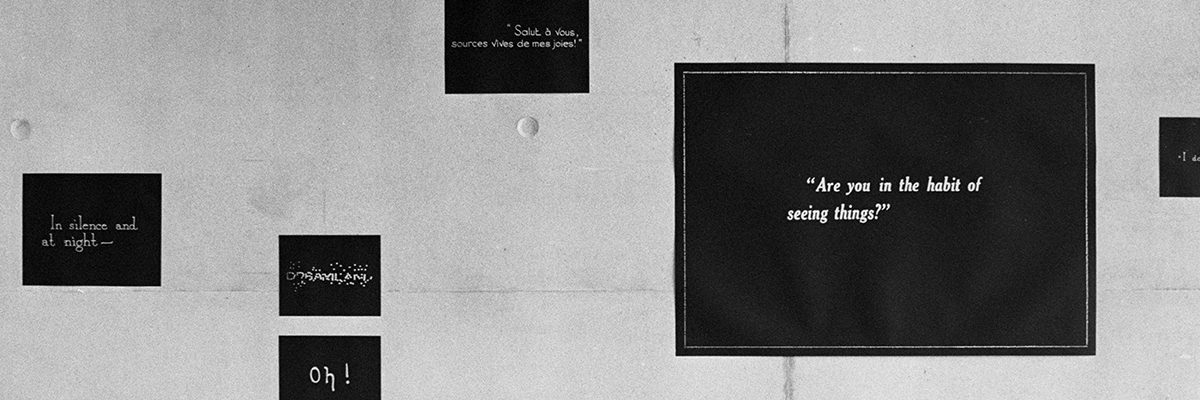
Silent Film Intertitles
with
Julien Van Anholt
Until the advent of talking pictures in the early 1930s, cinema had been referred to as silent. To compensate for the absence of sound, films were punctuated by numerous ‘intertitles’ or ‘cards’ containing a fixed text, interspersed among the sequences of moving images. These intertitles transcribed the dialogue or provided written information deemed necessary for the action to unfold or for a narrative situation to be properly understood.
To meet the frenetic demands of an ever-expanding industry, letters were printed in black or white ink before being filmed. Intertitles could also be hand-painted on thick paper or glass plates, using brushes or round-tipped nibs, by teams of letterers capable of producing up to 100 cards a day during the busiest periods. Yet today we know almost nothing about these technically gifted craftsmen. Their recognition is proportional to the attention paid to their work and to the value attributed to intertitles at the time.
This brief introduction to the history of intertitles will look at the materiality of these objects from a primarily typographic perspective, and raise awareness of the importance of written language in the development of cinema.
The Herb Lubalin Lectures are recorded and made available here and on Vimeo with the generous support of TypeCulture.
About Julien Van Anholt

As publisher and poet, Julien Van Anholt is also conducting a research into hand-painted intertitles in silent films (begun in 2021 at ANRT – Atelier national de recherche typographique). He lives and works in Paris, where he runs ISTI MIRANT STELLA, writes stanzas and send by post discreet magazines.
